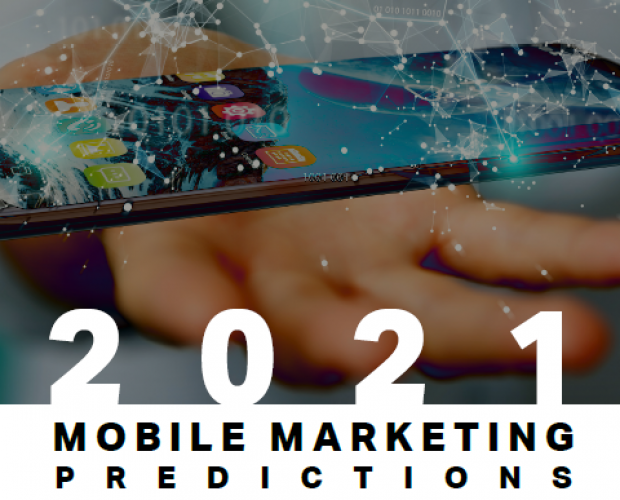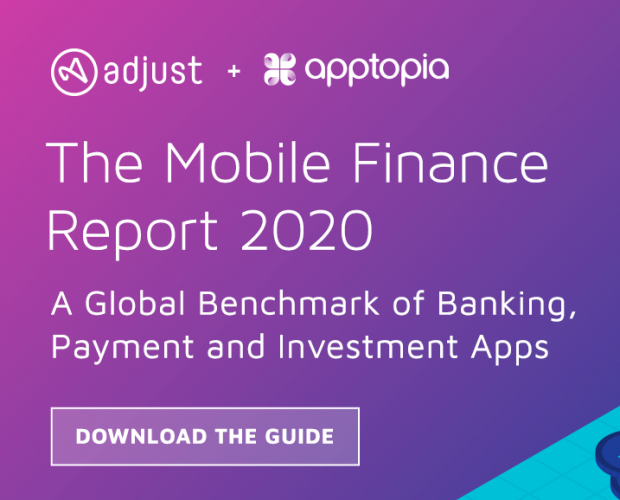No more mobile marketing – is app marketing dead as everything becomes digital marketing?
- Tuesday, March 29th, 2022
- Share this article:
Andre Kempe, Founder at performance marketing agency Admiral Media, argues that as app and web ecosystems are moving closer, it’s more important than ever to have a unified digital marketing approach across channels, devices, and platforms.
 In 2009, Apple started using the phrase ‘Theres an app for that’ in TV ads to show off the capabilities of mobile apps and promote the App Store. Since then, apps have fulfilled their massive growth potential and changed billions’ of people’s behaviors – making our lives more digital. As ‘software is eating the world’, this development is still far from finished: according to PwC, digital transformation was seen as the most critical growth driver in 2022 by executives, the second-biggest problem after hiring talent.
In 2009, Apple started using the phrase ‘Theres an app for that’ in TV ads to show off the capabilities of mobile apps and promote the App Store. Since then, apps have fulfilled their massive growth potential and changed billions’ of people’s behaviors – making our lives more digital. As ‘software is eating the world’, this development is still far from finished: according to PwC, digital transformation was seen as the most critical growth driver in 2022 by executives, the second-biggest problem after hiring talent.
For marketers, mobile apps have introduced a unique set of attributes and advantages – always ready; access to device sensors; home screen icon; notifications – along with unique challenges: limited linking and attribution; app stores as gatekeepers; changing rules of the platform ecosystems. These circumstances have led the mobile app marketing world and web marketing world down different paths, leading to separate ecosystems. Here are some of the main differences for marketers:
| Web marketing: | Mobile app marketing: |
|
Based on the open web and its frameworks |
Closed ecosystems of app stores |
|
Unlimited funnel customization and flexibility |
Limited customization of app store pages |
|
Link tracking standard, straightforward to customize and track individual campaign success |
Access to more data (e.g., device sensors), with permissions and frameworks dictated by platforms |
|
Cookies as the standard way to build audiences and retargeting (now being challenged with end of 3rd party cookies) |
Tracking challenges: SDK integrations needed for deep linking and campaign success measurement |
| Re-engagement mostly through email campaigns | Tracking significantly stifled through ATT/iOS 15 in 2021 |
| Re-engagement through email, push and in-app messages |
However, more than 10 years after ‘There’s an app for that’, the distinctions between app and the rest of the digital ecosystem matter less and less: the additional data points (e.g., IDFA, location data) that apps could access, are being locked down by the platforms. In parallel, browsers are shutting out third-party cookies, making it a lot more challenging for web advertisers to target (and re-target) the right audiences.
With the lines between app and digital marketing blurring, companies are striving to bridge the gap. Recently, App Annie has removed the word ‘app’ from its name. This is more than a rebranding, it points to a bigger change: historically, App Annie provided third-party information from the closed app store ecosystems. With its rebranding to data.ai, the company announced a partnership with SimilarWeb to close the gap between mobile and web data silos. Similarly, mobile CRM company Appboy changed its name to Braze because it wanted to be recognized for more than just apps and push notifications.
These tools reflect a development in their customer base: more and more web-first companies (e.g., eCommerce, finance, news, travel) are looking to acquire substantial amounts of app users to get closer to their customers, be able to send push notifications, become top of mind (via a home screen placement), and reach new audiences.
Conversely, app-first companies are attempting to expand to the web to benefit from better payment terms, sidestepping the platforms’ high fees. Additionally, they’re looking to build landing pages and onboarding experiences for different audiences that are more flexible than the rigid formats the app stores dictate, and thus gain more control over their funnel, especially with Apple’s iOS 15 ATT restrictions in place.
And then there are brick and mortar brands, such as shoe shops and grocery chains, who are striving to become digital for the first time via apps and web. Their goal is to reduce their reliance on physical stores and ‘traditional’ (non-data-driven) advertising, such as TV or out of home.
Conclusion
Now that app and web ecosystems are moving closer, while targeted advertising faces new limitations, it’s more important than ever to have a unified digital marketing approach across channels, devices, and platforms. This allows brands to:
- Allocate budgets and acquire users where there are currently most profitable/ROI-positive – this is a lot easier when there’s a unified budget instead of separate buckets for ‘mobile’ and ‘web’
- Be able to acquire new audiences wherever they are and quickly react to usage trends (e.g., the rise of TikTok)
- Gain a deeper understanding of user behavior on different channels and adapt onboarding strategies accordingly
- Reduce dependency on individual channels, such as Meta and Google and be more resilient against platform changes such as iOS 15
At Admiral Media, we focus on performance marketing across all digital channels, and we see how it’s becoming more and more critical for brands to align and be able to re-allocate their app and web marketing budgets for performance. For consumers, these differences are not that relevant anyway: they want to use a service and connect with a brand wherever it’s most convenient at the moment, whether its on the app, mobile web, or desktop.
















